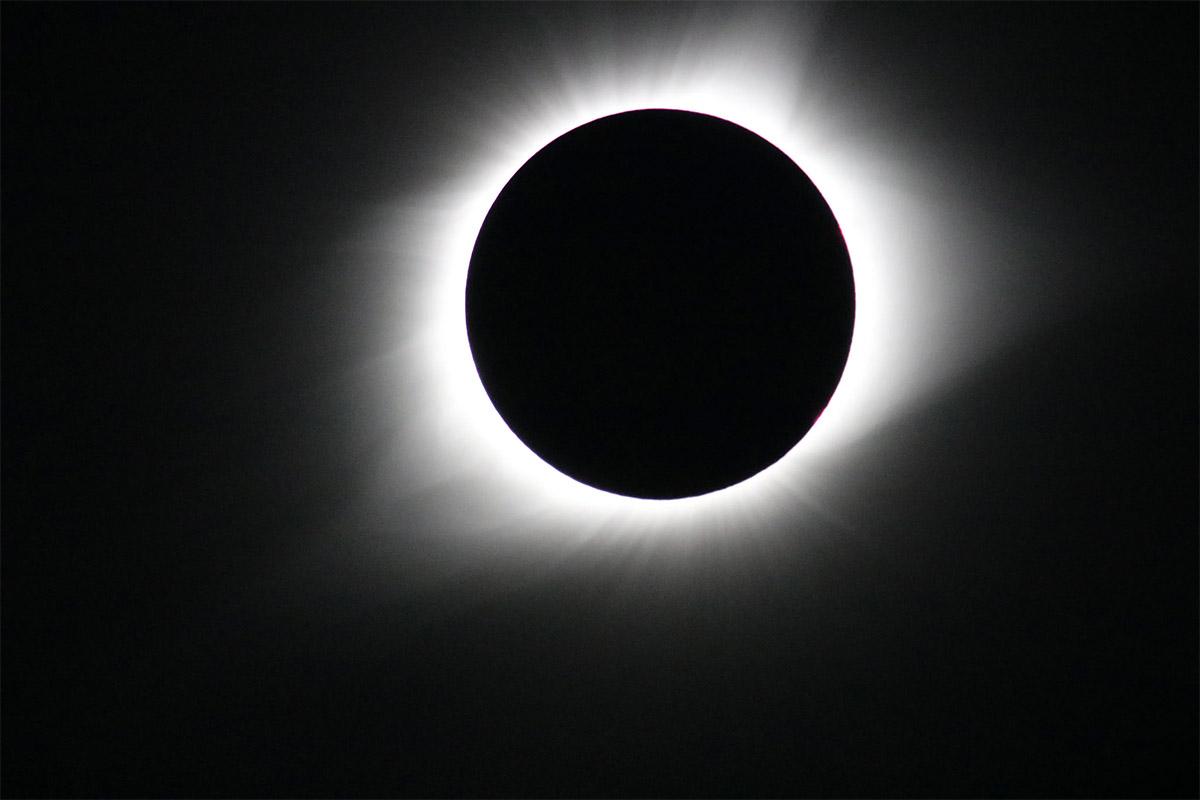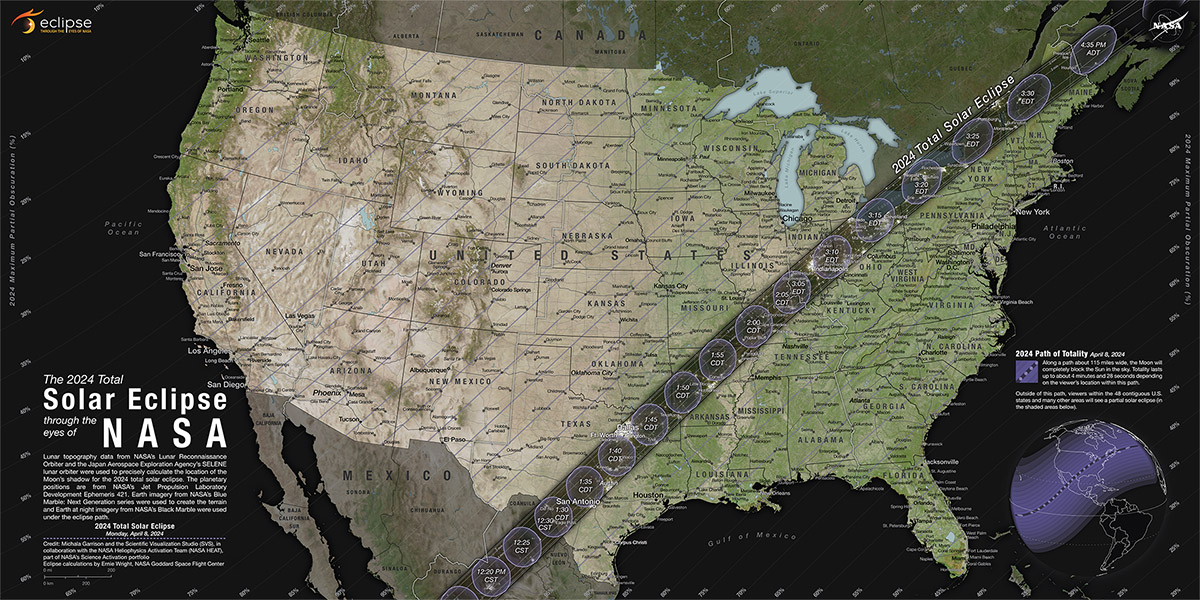2024 Total Solar Eclipse: Through the Eyes of NASA

Today, April 8, 2024, a total solar eclipse will cross North America, passing over Mexico, the United States, and Canada. The first location in continental North America that will experience totality is Mexico’s Pacific coast at around 11h07 a.m. PDT.
The path of the eclipse will continue from Mexico, entering the United States in Texas and traveling through Oklahoma, Arkansas, Missouri, Illinois, Kentucky, Indiana, Ohio, Pennsylvania, New York, Vermont, New Hampshire, and Maine. Small parts of Tennessee and Michigan will also experience the total solar eclipse. The eclipse will enter Canada in Southern Ontario and continue through Quebec, New Brunswick, Prince Edward Island, and Cape Breton, exiting continental North America on the Atlantic coast of Newfoundland, Canada, at 5h16 p.m. NDT.

A total solar eclipse occurs when the Moon passes between the Sun and Earth, completely blocking the Sun’s face. People located in the center of the Moon’s shadow will experience a total eclipse when it hits Earth.
The sky will darken as if it were dusk. Weather permitting, people in the path of a total solar eclipse can see the Sun’s corona, or outer atmosphere, which is usually obscured by the bright face of the Sun.
Observing an eclipse must be done safely. The only safe way to look directly at the uneclipsed or partially eclipsed Sun is with specialized eye protection, such as eclipse glasses, a solar viewer, or through a telescope with a solar filter.
In Portugal, the eclipse can only be seen partially in the Azores between 7h00 p.m. and 8h00 p.m. (local time).
NASA will broadcast this event live. You can watch it here or in the video below at 1h00 p.m. EDT (6h00 p.m. GMT+1) today.
🇵🇹 Versão portuguesa disponível aqui
Source: NASA
https://science.nasa.gov/eclipses/future-eclipses/eclipse-2024/where-when/
https://science.nasa.gov/eclipses/future-eclipses/eclipse-2024/the-eclipse-nasa/


Leave a Reply